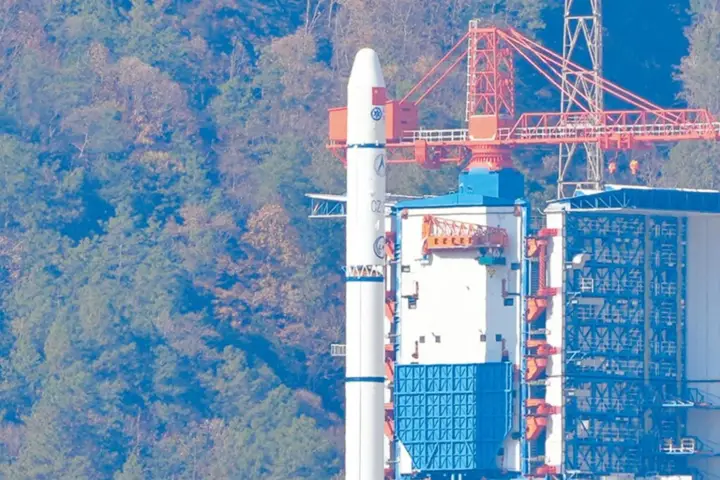China Fails in Moon Mission

A recent space mission by China to the Moon has ended in failure, according to a report from Business Today[^1^]. The pair of experimental technology satellites, DRO-A and B, did not achieve the expected orbit on their way to the Moon. This is a rare setback in China’s recent record of successful space missions.
Mission Details
The satellites were launched into orbit from the Xiang Satellite Launch Center at 8:51 p.m. on March 13th. While the first and second stages of the Long March-2C rocket operated normally, its upper stage, the Yuanzheng-1S, did not[^1^].
Reassurance from Chinese Officials
According to a brief statement from Xinhua News Agency, the satellites have not yet been placed in their intended orbit, and efforts are underway to address the issue[^1^].
Planned Mission Objectives
The initial plan for both satellites was to reach the Moon and enter a specific orbit known as the Distant Retrograde Orbit (DRO). Once there, they would have operated alongside the DRO-LEO, a third satellite successfully placed in low Earth orbit last month to test laser-based positioning technologies between Earth and the Moon, known as Cislunar space[^1^].
Unknown Orbital Status
Jonathan McDowell, an astronomer at Harvard who tracks rocket launches and space activities, stated that neither the U.S. military nor amateur researchers currently know the exact orbit of the DRO-A and B satellites[^1^].
Potential Causes of Failure
Experts speculate that the satellites may have encountered a malfunction in their propulsion systems, preventing them from reaching the intended orbit[^1^]. However, the exact technical details surrounding the failure remain undisclosed.
Importance of DRO Orbits
DRO orbits, located tens of thousands of kilometers above the Moon’s surface, provide high stability and allow spacecraft to maintain their orbits for extended periods without the need for significant fuel consumption. This makes them ideal for scientific research and exploration[^1^].
Significance for China’s Space Ambitions
China has been targeting the establishment of a next-generation space station in orbit around the Moon, with the goal of supporting crewed missions and transporting materials between the Moon and Earth[^1^].
Comparison with NASA’s Plans
In contrast, NASA plans to use a different orbit, known as the Near-Rectilinear Halo Orbit (NRHO), around the Moon to build the Lunar Gateway and support missions to the lunar surface, Mars, and beyond[^1^].
While setbacks are inevitable in the pursuit of space exploration, they provide opportunities for learning and improvement. China’s failed moon mission highlights the challenges and complexities involved in venturing beyond Earth’s atmosphere, reminding us that success in space requires perseverance, innovation, and a willingness to learn from failure.
For more finance and technology-related news, visit Business Today.
[^1^]: Source: Business Today
